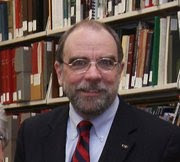A new approach to local history, part one: History2.0, SDS and participation
“History2.0” is a term I’ve whimsically adapted from the current dialog about new interactive technologies on the Web, called Web2.0, to explore how such emerging technologies might profitably be employed by those of us working to collect, conserve, catalog, exhibit, interpret and generally use information about the history of our communities in the Western Reserve. Some of this is being implemented experimentally in my work as the Special Collections Librarian at the Cleveland State University Library (disclaimer), and some is just my ruminations on how we could all be working together more effectively. I plan on returning again and again to this subject in future blogs, developing ideas as they come to me and discussing concepts from other realms of library and information science as they relate to local history concerns.First, a definition. According to the Wikipedia, “Web2.0” is “a second generation of services available on the World Wide Web that lets people collaborate and share information online.” It may also be “an overly vague buzzword, incorporating whatever is newly popular on the Web (such as tags and podcasts), without having any fixed meaning.” Whatever the exact utility of the term, the basic idea is that there is coming into being a new way of interacting with information on the Web, one that allows for more direct participation by viewers than was possible with the first generation of Web sites, which were characterized by static pages and one-way information delivery. Web2.0 technologies include the blogs, RSS feeds, folksonomies and tagging, flickr, del.icio.us, Amazon reviews, and any other technology that invites viewers to add, catalog, critique, share and/or otherwise participate in information creation and delivery.
My interest in this all stems from my work as a librarian and historian in Cleveland. But it goes further back to the Sixties at the Bowling Green State University, where I was one of “Barry’s Boys” in ’64 and later a member of the Students for a Democratic Society (SDS). I’d like to delve into that period by way of explaining why the philosophy of Web2.0 was so seductive to me and motivated me to apply it to library support of local history research.
I latched onto Barry Goldwater in 1964, recruited by reading his book Conscience of a Conservative. There he expounded upon the ideal of states rights, as a means of counterbalancing the centralization of power at the federal level. Less pleasant associations of states rights with racial segregation in the South and Barry’s hawkish views of foreign policy didn’t concern me then, as I was captivated by the idea that people would be better citizens to the extent that they could wrest control over the decisions that affected the from the federal government and return them to state control. Following Barry’s burial in the September elections, I drifted into political apathy.
In 1966 I read the Port Huron Statement of the Students for a Democratic Society and, after joining SDS, I read more on the subject in their New Left Notes newspaper. The Port Huron Statement said in part:
As a social system we seek the establishment of a democracy of individual participation, governed by two central aims: that the individual share in those social decisions determining the quality and direction of his life; that society be organized to encourage independence in men and provide the media for their common participation.
To me, this was Barry’s states rights philosophy taken to its logical conclusion at the local community level. Many issues may be best handled at the federal or state level, but ultimately it would be society’s ability to move control over major decisions to the local level, to make government human scale, that would ultimately empower people and make for a stronger citizenry in this new “Participatory Democracy” that SDS and the New Left were advocating. Throughout my association with the New Left, I held to the idea that our purpose was to create autonomous, self-reliant, actualized individuals capable of working in a healthy, participatory democracy, not people who were cogs in a social machine. The direction that I see the Web going (unless the corporations get their hands too firmly on it), with the advent of Web2.0 technologies, encourages me to think that it is that “media for their common participation,” that SDS called for, and we could use it for local history projects. The OCLC Environmental Scan survey found a marked increase in self-sufficiency in Web users and an emerging possibility that the Web could be a tool for more informed, involved and self-reliant consumers of goods, services and information than previously possible, with qualitative gains to society in the process.
I'll detail later how the Web2.0 technologies might help build and support an on-line community of participation, as well as other ways we could work together to benefit local history, but let me just say now that the Web may be the Revolution I was waiting for in the Sixties :-)


0 Comments:
Post a Comment
<< Home